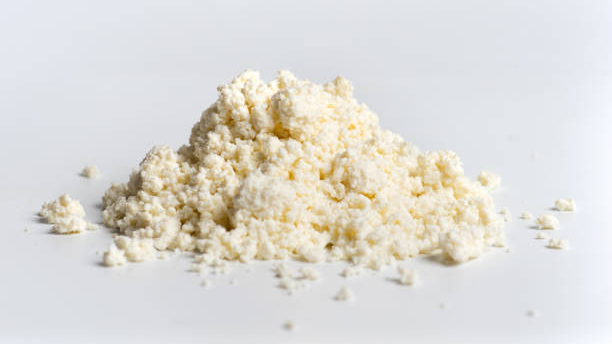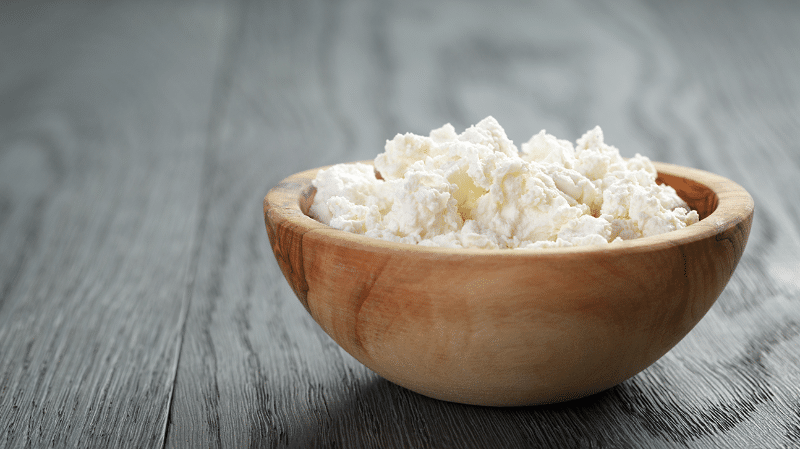Smegma is something that most people have but rarely talk about. It’s a natural substance made up of dead skin cells, oils, and moisture that can build up around the genitals in both men and women. While smegma is completely normal, too much of it can lead to discomfort, odor, or even infections if it’s not cleaned away regularly.
In this guide, we’ll break down what smegma is, why it forms, and how to manage it. Here’s what you’ll learn:
- Understanding smegma: What it is and why it’s a normal part of the body
- Causes of buildup: Why it accumulates and how to prevent it
- Cleaning tips for men and women: How to safely clean and prevent smegma
- When to see a doctor: Signs that might indicate a need for medical advice
- Myths and facts: Common misconceptions, cleared up
Let’s dive in to cover everything you need to know.
What is Smegma and Why Does it Form?

Smegma is a combination of dead skin cells, natural oils, and moisture. It’s part of the body’s natural process to keep skin flexible and healthy, but in certain areas, like around the foreskin in men or the labia in women, it can collect and become noticeable if not regularly cleaned.
Is Smegma Normal?
Yes, skin oils and cell build-up is normal! Everyone’s skin sheds cells, and the body produces oils to keep the skin soft. However, the folds of skin around the genital area create spaces where these cells and oils can get trapped, forming smegma. While it’s not harmful, too much smegma buildup can sometimes cause discomfort or odor.
It’s Role as a Natural Lubricant
One reason our bodies produce this natural substance is to provide lubrication in sensitive areas. Smegma helps to reduce friction, keeping skin comfortable and protected, especially around areas like the foreskin in men or the labia in women. This natural lubrication is one of the ways our bodies keep skin healthy.
Causes of Smegma Buildup

Several factors can lead to accumulation, especially if regular cleaning is overlooked. Here’s what typically causes it:
- Natural Body Processes
The skin sheds cells and produces oils all over the body. In areas with folds, like under the foreskin or around the labia, these cells and oils can gather and mix with moisture to form smegma. - Hormonal Changes Throughout Life
During puberty, the body produces more oils, which can lead to increased production. This is normal and tends to balance out with age, but regular hygiene is still important. Other stages, such as pregnancy, menopause, or even certain hormone therapies, can also increase oil production, which may cause temporary increases in smegma. - Sweat and Tight Clothing
Sweating, especially if wearing tight or synthetic clothing, can trap moisture around the genital area, increasing the likelihood of buildup. Loose, breathable fabrics can help reduce this. - Medical Conditions Like Phimosis
In men, if the foreskin is tight and difficult to retract (a condition called phimosis), smegma can easily collect. For those with phimosis, a gentle hygiene routine and, in some cases, medical advice may be necessary. - Impact of Climate and Activity Level
People in warmer climates or those who engage in regular physical activity, such as exercise or sports, may sweat more, which can increase the chance of buildup. In these cases, a quick rinse after exercising can help prevent discomfort and keep the area fresh.
How to Prevent and Safely Remove Smegma

Keeping smegma under control is simple with a gentle daily routine. Here’s how to approach prevention and removal for both men and women.
Choosing the Right Products
When it comes to choosing soaps or cleansers, it’s important to pick options that won’t irritate sensitive skin. Here are some product tips for safe cleaning:
- Mild, Fragrance-Free Soaps: Harsh or scented soaps can dry out the skin, causing irritation. Look for fragrance-free or hypoallergenic products.
- Avoid Antibacterial Soaps: Antibacterial soaps can disrupt the skin’s natural balance and aren’t necessary.
- pH-Balanced Cleansers: If you have sensitive skin, pH-balanced cleansers are often gentler and help maintain the skin’s natural barrier. Maintaining a pH of around 5.3 in the genital area is ideal for skin health. This balance helps prevent irritation and bacterial growth.
Cleaning Tips for Men
- Gently Retract the Foreskin: In uncircumcised men, gently pull back the foreskin to expose the area where smegma collects. Regular cleaning can prevent buildup from becoming an issue.
- Rinse with Warm Water: Warm water alone is usually enough to keep things clean. Avoid harsh scrubbing, as this area is sensitive. If you prefer using soap, choose a mild, unscented one and rinse thoroughly.
- Pat Dry: After washing, pat the area dry with a soft towel to avoid trapping moisture under the foreskin, which could lead to further buildup.
Cleaning Tips for Women
- Focus on the Outer Folds: For women, it can accumulate around the labia. Simply rinse with warm water during a shower, focusing on the outer folds without needing to wash internally.
- Choose Mild, Fragrance-Free Products: Strong soaps and scented products can cause irritation, so opt for mild, unscented soap if you choose to use any. Be sure to rinse thoroughly.
- Dry Carefully: After washing, gently pat the area dry. Avoid tight clothing, as it can trap moisture, increasing the chance of smegma buildup.
How Often Should You Clean?
A daily rinse is typically enough to manage smegma. After heavy activity or sweating, a quick wash can also help. The goal is regular but gentle care—over-washing can dry out and irritate the skin. And, side note, if you use personal items like sex toys, cleaning them before and after each use can prevent bacterial buildup, and make sure your routine stays fresh.
Smegma vs. Yeast Infection: How to Tell the Difference

Smegma and yeast infections can sometimes be confused because they both cause changes in the genital area and are linked to vaginal health. However, there are a few clear ways to tell them apart. By knowing these differences, you can get a better idea of what’s normal and when it might be time to see a doctor.
Look and Feel
- Smegma: This is a soft, white or yellowish buildup made up of dead skin cells and oils. It usually collects on the surface, like under the foreskin or around the folds of the labia.
- Yeast Infection: A yeast infection often causes a thick, white discharge that looks a bit like cottage cheese. Unlike smegma, it’s usually deeper than just a surface buildup and can cause a lot of irritation.
Symptoms
- Smegma: It might have a slight odor or cause mild irritation if it’s not cleaned away, but it doesn’t typically cause itching or pain.
- Yeast Infection: This type of infection tends to bring intense itching, redness, and swelling. It can also make urination or intercourse uncomfortable, which is more than you’d feel from smegma.
Odor
- Smegma: Fresh sebaceous secretion usually doesn’t have a strong smell, but if it builds up, it can develop a noticeable odor.
- Yeast Infection: Yeast infections often have a “yeasty” smell, sometimes described as similar to bread or beer, which is different from smegma.
When to Seek Help
- Genital secretions can be managed with regular cleaning. However, if you’re noticing strong discomfort, itching, or symptoms that don’t go away, it’s a good idea to check with a healthcare provider.
- Yeast infections usually need antifungal treatments, which are available over-the-counter or by prescription.
Medical Concerns: When to See a Doctor

While smegma itself isn’t harmful, there are situations where it could cause issues if not managed. Here’s when it’s best to consult a healthcare professional:
- Signs of Infection: If you experience redness, swelling, itching, or pain in areas where smegma collects, it might be a sign of an infection. Bacteria can grow in smegma, especially if it builds up over time.
- Persistent Odor or Unusual Discharge: While it can have a mild smell, a strong odor or discharge that doesn’t improve with cleaning may indicate a bacterial imbalance or infection.
- Difficulty Retracting the Foreskin (Phimosis): For men, if the foreskin can’t be pulled back fully, it may collect more easily. A doctor can provide advice on gentle stretching or, in some cases, other treatments if phimosis is causing discomfort.
- Recurring Irritation in Sensitive Skin Types: Some people may have naturally sensitive skin or conditions like dermatitis that can worsen if smegma builds up. If you’re prone to skin irritation, consult a healthcare provider for personalized advice.
If you’re unsure about any symptoms, reaching out to a healthcare provider can help with peace of mind and proper treatment.
FAQs About Smegma

Can it contribute to other skin conditions?
Yes, smegma buildup can sometimes create an environment that might exacerbate other skin issues. For example, people prone to dermatitis may find that smegma buildup irritates the skin further, increasing redness or itchiness. Keeping the area clean can help minimize these risks.
Does diet have any impact on smegma production?
Diet doesn’t directly impact smegma production, but staying well-hydrated can help keep the skin balanced, reducing dryness or excess oiliness. A balanced diet that supports healthy skin may help, but the formation primarily depends on hygiene rather than diet.
How does smegma change with age?
As people age, skin cell turnover and oil production can slow down, which may reduce smegma production. Older adults may experience less buildup compared to teenagers or young adults, but regular cleaning is still beneficial for comfort and hygiene.
Can it cause discomfort during physical activity?
Yes, smegma can sometimes cause minor irritation during activities like cycling, running, or other exercises if it has built up and hardened. Keeping the area clean before physical activity can prevent this issue and ensure comfort.
Are there any specific soaps or products that should be avoided?
It’s best to avoid harsh, scented, or antibacterial soaps in the genital area, as they can dry out and irritate sensitive skin. Fragrance-free, mild soaps or just water are often the safest choices for removing the discharge without causing irritation.
Is smegma common after surgery or during recovery?
Yes, it can be common after surgeries involving the genital area, as the body continues its natural processes. During recovery, it’s important to follow any cleaning instructions provided by the healthcare team, as certain products or routines may be recommended or restricted.
Can it build up on medical devices, like catheters?
Yes, if someone uses a medical device, such as a catheter, smegma or other natural buildup may occur. Regular, gentle cleaning of the area around the device (as advised by a healthcare provider) is essential to prevent irritation or infection.
How is smegma different from discharge?
Smegma is primarily made up of dead skin cells, oils, and moisture that collects on the skin’s surface. Discharge, on the other hand, is a fluid released from the body, often from glands within the genital area, and can vary in color and texture. Discharge may signal hormonal changes or infections, while smegma is simply a result of skin turnover.
Closing Thoughts

Understanding smegma and knowing how to manage it can help you feel more confident and comfortable in your daily hygiene routine. Natural buildup is a normal part of the body, and with simple, regular care, it’s easy to keep it under control. Remember, if you ever have questions or notice symptoms like pain, itching, or unusual discharge, reaching out to a healthcare provider is always a good choice for peace of mind.
Taking small steps to stay informed can make a big difference in how you feel about your health. With the tips in this guide, you’re equipped to handle smegma in a way that’s both practical and reassuring.
Want More Useful Articles?
- Male Yeast Infections – Yep, Dudes Can Get Them Too
- Vaginal Infections and Sex – Quick Guide to Why It Itches
- Sperm Health: Learn What Makes Your Swimmers Suffer


